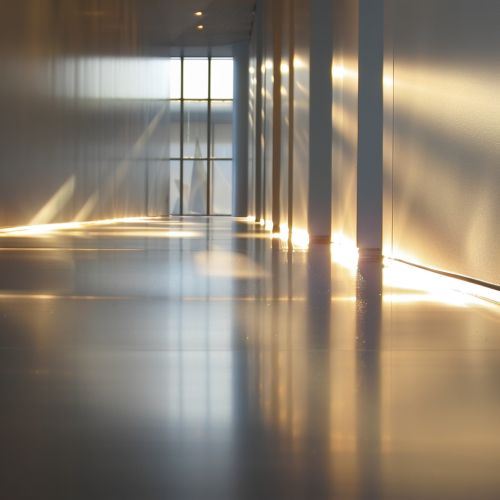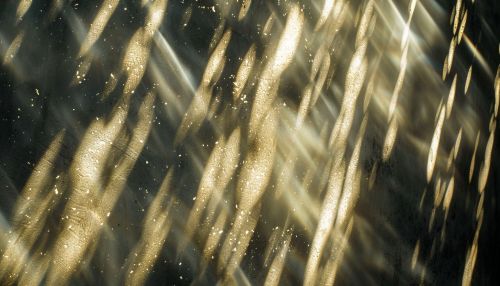Reflection (physics)
Introduction
Reflection is a fundamental concept in the field of physics, specifically in the study of wave theory and optics. It describes the phenomenon where waves, such as light or sound, change direction after hitting a boundary separating two different media. This change in direction is such that the incident wave returning into the medium from which it originated.
Principle of Reflection
The principle of reflection is based on two laws, known as the laws of reflection. The first law, known as the law of incidence, states that the incident ray, the reflected ray, and the normal to the surface of the mirror all lie in the same plane. The second law, known as the law of reflection, states that the angle of incidence is equal to the angle of reflection.
Types of Reflection
Reflection can be categorized into two types: specular (or regular) reflection and diffuse reflection.
Specular Reflection


Specular reflection, also known as regular reflection, occurs when light waves encounter a smooth, shiny surface such as a mirror. The light waves are reflected in a single, definite direction. This type of reflection allows for the formation of clear and sharp images.
Diffuse Reflection


Diffuse reflection, on the other hand, occurs when light waves encounter a rough or uneven surface. The light waves are scattered in multiple directions. This type of reflection does not form clear images but is responsible for our ability to see non-shiny, non-reflective objects.
Reflection of Light
The reflection of light is a common occurrence and has significant applications in daily life and various scientific fields. It is the principle behind the functioning of mirrors, periscopes, telescopes, and other optical devices.
Law of Reflection
The law of reflection governs the reflection of light. It states that the angle of incidence is equal to the angle of reflection, with both angles measured relative to the normal at the point of incidence.
Reflection from a Plane Mirror
When light is reflected from a plane mirror, it obeys the law of reflection. The image formed by a plane mirror is virtual, upright, and of the same size as the object. The distance of the image from the mirror is the same as the distance of the object from the mirror.
Reflection from a Spherical Mirror
Spherical mirrors, which include concave and convex mirrors, also follow the law of reflection. However, due to their curved nature, the images formed by these mirrors can be either real or virtual, and can vary in size and orientation.
Reflection of Sound
Just like light, sound waves also exhibit the phenomenon of reflection. The reflection of sound is responsible for phenomena such as echo and reverberation.
Echo
An echo is a reflection of sound that arrives at the listener with a delay after direct sound. The minimum distance required from the reflecting surface for an echo to be heard is approximately 17.2 meters.
Reverberation
Reverberation is the persistence of sound in a particular space after the original sound is removed. It is caused by multiple reflections of sound waves from various surfaces in the environment.
Applications of Reflection
The principle of reflection has numerous applications in various fields such as engineering, medicine, and technology.
In Engineering
In engineering, reflection is used in the design of acoustics for auditoriums and concert halls. The principle of sound reflection is used to ensure that sound reaches all parts of the venue.
In Medicine
In medicine, the reflection of sound waves is used in ultrasound imaging. This technique allows for the visualization of internal body structures and is crucial in fields like obstetrics and cardiology.
In Technology
In technology, the reflection of light is used in devices like periscopes and telescopes. It is also the principle behind the functioning of optical fibers, which are used for high-speed data transmission.
